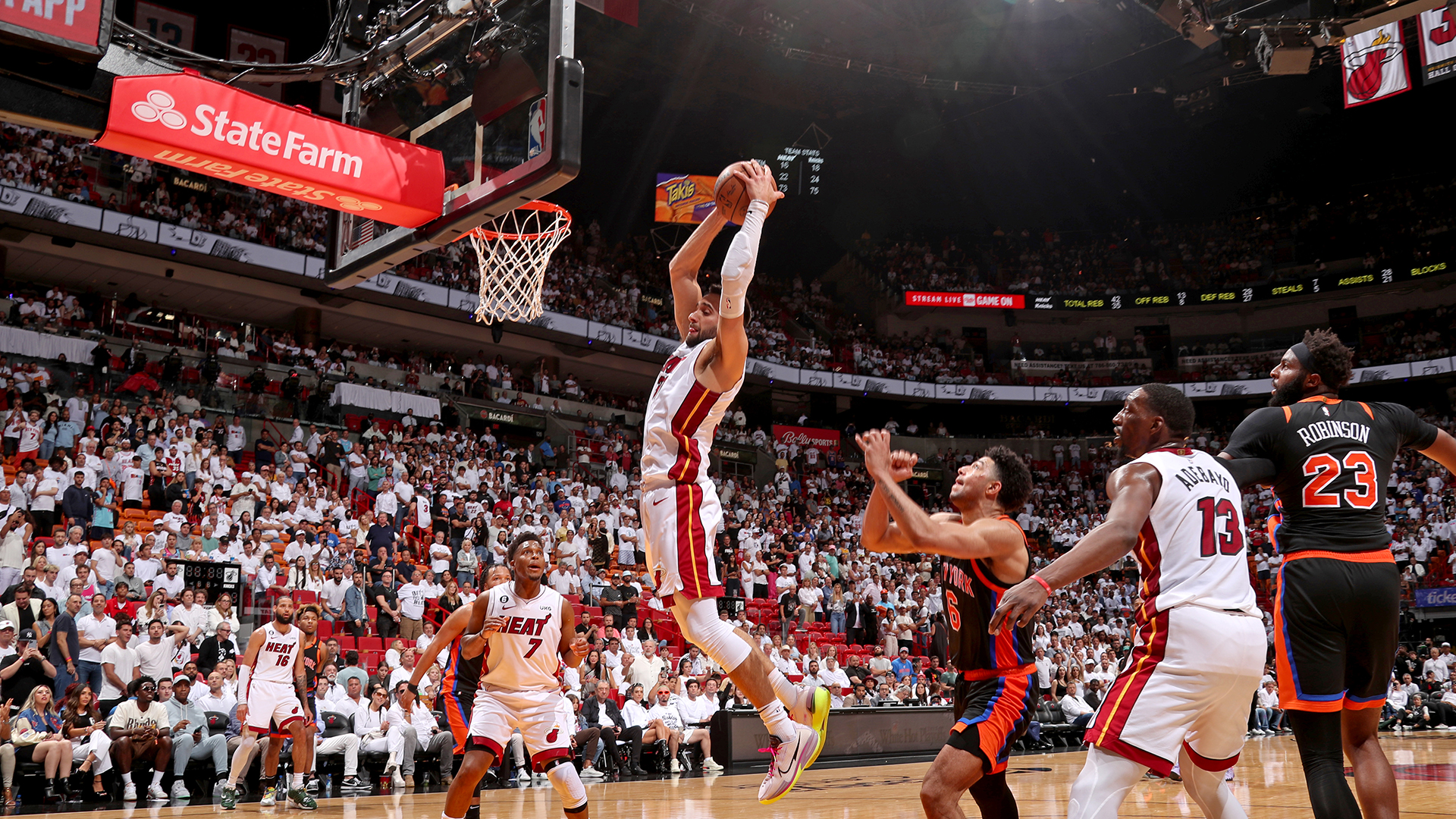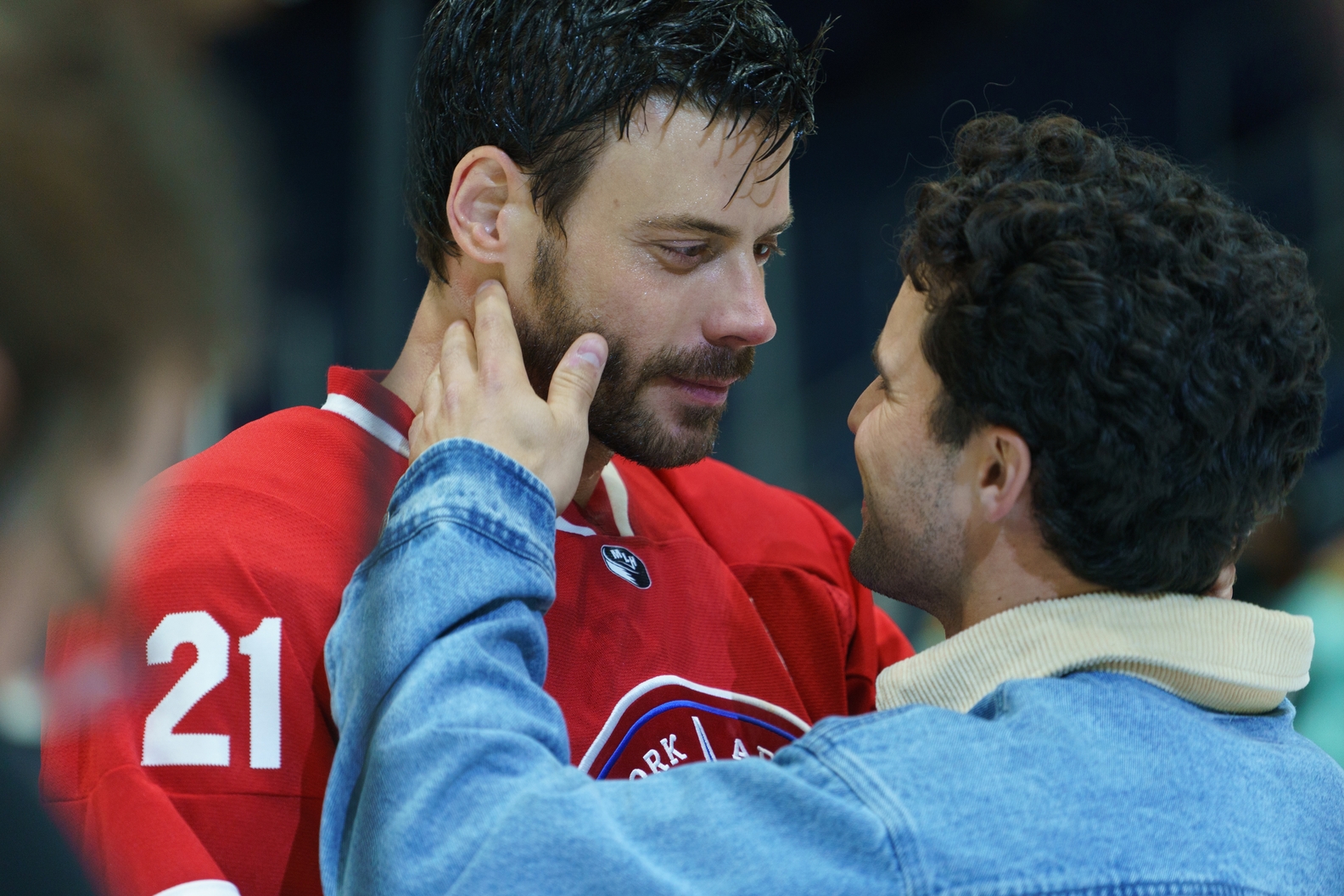There are many reasons why the Miami Heat, an 8-seed that came agonizingly close to missing out on the playoffs altogether, are now one win away from the Eastern Conference Finals. The most obvious of those is, well, obvious: Despite injuring his ankle late in Game 1 against the New York Knicks, Jimmy Butler has been his usual playoff self this series, averaging 26.7/5.7/7 in three healthy games, on 48 percent shooting. The Heat's role players have also hit key shot after key shot all series long, with Max Strus taking his turn once again in Game 4 by stopping several Knicks runs with back-breaking threes. It has also helped that the Knicks have been shooting abysmally all series, averaging 28.2 percent from behind the line on 35.5 attempts per game. Also, Julius Randle has alternated between being an offensive machine—this was mostly in Game 2, the only Knicks win so far—and, more often, a bystander.
In Monday night's Game 4, the Heat came up with another reason why they suddenly look like a contender. This time, for the first time this series, it was rebounding. The Knicks have some big boys in the paint in Mitchell Robinson and Isaiah Hartenstein, and they have pressed that advantage throughout the opening three games. Something changed in the fourth quarter of Game 4, though, which was when Miami suddenly became what felt like the greatest offensive rebounding team in the history of basketball for 12 minutes.
The possession above felt like a breaking point for the Knicks. Despite shooting 75.6 percent from the field in the third, New York had actually let Miami increase its lead in that period by one, a demoralizing bit of statistical anomaly that mainly had to do with the all-important difference between a three-point basket and a two-point one. Still, the Knicks were very much in it with about ten minutes left in the fourth, and there remained a chance that one of those mini-runs that they had deployed all game would not be immediately countered by a Strus three-pointer. However, it's hard to come back from giving Miami an almost minute-long possession that featured three offensive rebounds, a foul on Jalen Brunson, and somehow no points for the Heat. On the one hand, this is some real Eastern Conference Basketball stuff. But it was impressive all the same, if only as a representation of how the Heat's relentlessness can annoy other teams into the grave.
You would think that coming out of that possession with no points would be a huge win for the Knicks, but it proved a sign of things to come in the fourth. For that period, the Heat had seven offensive rebounds and seven second-chance points. Given that Miami shot horrendously in the fourth, notching just 27.3 percent from the field and missing all nine attempts from three, those rebounds were the team's only lifeline against blowing both this game and the chance to grab a commanding 3-1 series lead. For the game, the Heat out-rebounded the Knicks 31-27, and 13 to 8 on the offensive glass. This lead to a disparity in second-chance points—Miami had 17 to New York's 7—that puts the eight-point Heat win in perspective.
So, how did Miami up its rebounding game to out-hustle the much larger Knicks at their own game? To hear Julius Randle tell it, "Maybe they want it more, I don't know." There is something to that; Miami's players—specifically Butler, Kyle Lowry, Caleb Martin, and Bam Adebayo—seemed to swarm into the paint on every hoisted shot in the fourth, hassling the Knicks' paint dwellers as a team. Take this Butler rebound: While he gets the stat and the follow-up, this was all Adebayo, who got enough of the ball over both Randle and Mitchell Robinson to tip it to his superstar teammate for the layup:
These are the types of rebounds that the Knicks had feasted on through three games, and especially in the two games in New York. (Miami also outrebounded the Knicks in Game 3, but that was an all-around whooping, and even then, Miami only got 50 rebounds to New York's 48, so it was close.) With the exception of that Game 3 blowout, the Knicks had leveraged their superior size and willingness to fight in the paint to counteract their shooting struggles; it's how they have been able to at least stay in games while shooting like a mid-table Big Ten team.
On Monday, though, the tables were flipped on them and the Knicks had no real answers for a Miami team that adapted to a cold-shooting night of its own by crashing the boards over and over again. If the Heat can keep this advantage, this series should wrap up on Wednesday night in New York. The Knicks are running out of ways to show any kind of supremacy against the annoying little 8-seed that could.







